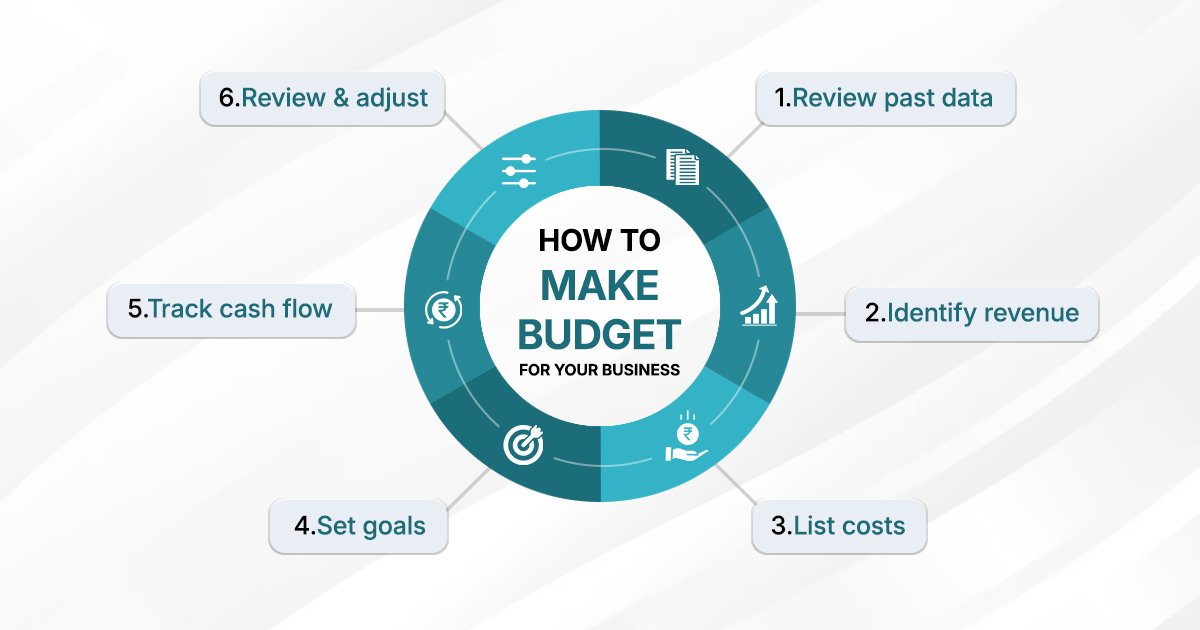Table of Contents1) Introduction 2) What Is a Business Budget? 3) What Makes a Good Budget? 4) Small Business Budgets for Different Types of Companies 5) How to Create a Business Budget in 6 Steps 6) Role of Accounting Software in Budgeting 7) FAQs |
|
Introduction
Every business has some small and recurring expenses such as courier charges, office snacks, or parking fees that don't justify making a purchase order or issuing a cheque. That’s where petty cash comes in. While the amounts are small and are not managed properly they can add up to big problems. This guide explores the essentials of petty cash management and how to keep it under control.
What is Petty Cash in Accounting?
In accounting terms, petty cash refers to a small fund kept on hand for minor business expenses. It's managed separately from the main cash account and used for immediate payments that don't require formal procurement processes.
The record of these transactions is maintained in a petty cash book, a specific type of subsidiary book.
So, what do you mean by a petty cash book? It’s simply a financial record used to document every cash expense made from the petty fund.
What are Petty Cash Expenses?
Petty cash expenses include routine, low-cost items needed to keep daily operations running. These are usually small, urgent payments that don’t require upper-level approvals.
A typical petty cash expenses list includes:
● Office supplies (pens, notepads, printer ink)
● Refreshments (tea, coffee, water)
● Local travel or cab fares
● Postage or courier charges
● Minor repairs or maintenance
All such transactions are entered into the petty cash book records which help track usage and prevent overspending.
Why Do Businesses Need Petty Cash?
The main purpose of petty cash is to provide a quick and easy way to handle small expenses without going through full accounting procedures. It increases businesses operational efficiency and supports minor yet necessary expenses.
When a petty cash is kept there will be fewer delays in purchasing routine items less strain on the finance department and better agility in daily operations. For example instead of waiting for invoice approvals to buy batteries for the office remote the receptionist can simply use petty cash.
How Much Petty Cash You Should Have?
There’s no fixed rule but the amount of petty cash a business should maintain depends on:
● The nature of the business
● Frequency of small transactions
● Past expense history
The opening balance of petty cash is shown on the debit side of the cash book when the petty cash account is initialized. Typically amounts range from ₹1,000 to ₹10,000 depending on the scale of operations of your business.
What is Petty Cash Management?
Petty cash management is the process of handling and monitoring small cash transactions in a business. It includes maintaining the petty cash register, issuing funds, collecting receipts, and reconciling balances.
Effective petty cash management makes sures that the balance in the petty cash book is accurate at all times and reflects both expenditures and cash on hand. It minimizes the risk of theft, errors, and unauthorized use.
Best Practices for Petty Cash Management
While petty cash may involve small amounts its management requires discipline. Here are some best practices:
● Assign a custodian or person who maintains petty cash book
● Limit access to the fund
● Keep receipts for all transactions
● Regularly audit the fund to make sure that the balance of petty cash is accurate
● Use clear formats for petty cash book records based on the types of petty cash book (simple or analytical)
A well-maintained petty cash system boosts accountability and keeps spending transparent.
Petty Cash Management: Challenges & Solutions
Common Challenges:
● Missing receipts
● Misuse or theft
● Inconsistent documentation
Solutions:
Implementing strict access control, regular reconciliations and clear reporting formats can eliminate most issues. Make sure that each entry in the petty cash book matches the physical cash balance. Use software tools or spreadsheets to support manual processes.
Modern Solutions for Petty Cash Management
Managing petty cash manually can lead to errors, missing receipts and difficulty in tracking expenses. Thankfully you can use modern accounting tools to make this process more efficient and accurate.
Using Accounting software allow you to:
● Track petty cash transactions in real-time
● Maintain digital petty cash books
● Categorize expenses for better analysis
● Set permissions and access controls
● Automate reconciliations and generate reports
If you're using Tally, you might ask:
“Petty cash comes under which group in Tally?”
The answer is: Petty Cash is grouped under “Cash-in-hand.”
To manage it properly:
● Create a dedicated ledger under the Cash-in-hand group
● Use it to record all petty cash inflow and outflow
● Reconcile regularly with physical cash
By integrating petty cash into your accounting software you can reduce manual errors and maintain transparency.
Conclusion
Petty cash may involve small amounts but managing it properly is difficult. A well-organized petty cash system saves time improves transparency and helps to prevent misuse or errors.
By keeping detailed records, setting clear guidelines and regularly reviewing your businesses petty cash activity you can make sure that even minor expenses are accounted for correctly.
In short, good petty cash management leads to better financial discipline and smoother business operations.
Related Topics:
• Petty Cash Management 101: Tips and Techniques
• Top Billing Software Features for Small Business Owners to Consider

